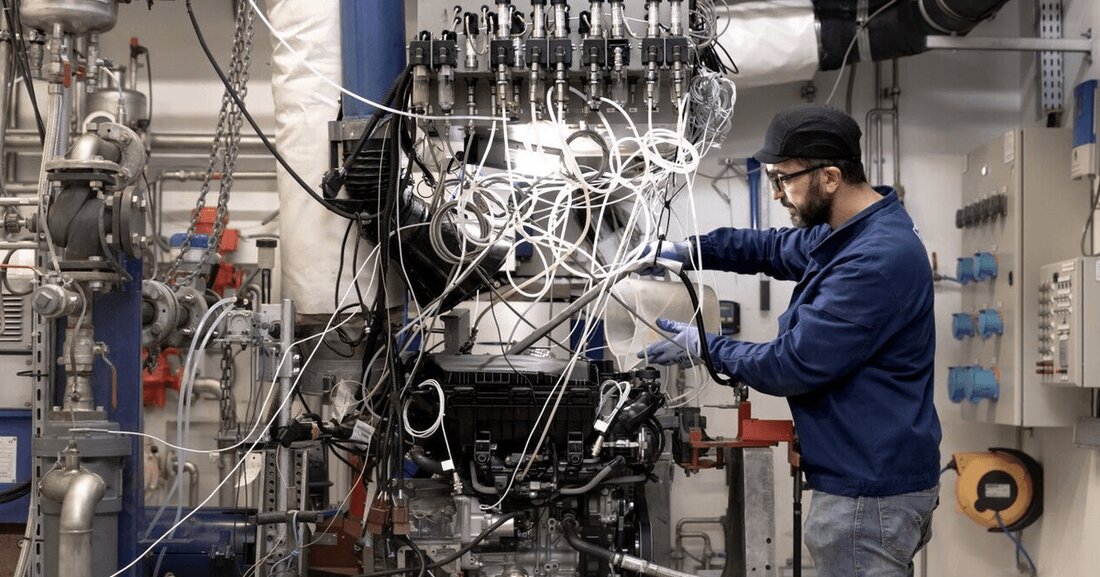Millions of engines could run on eFuels
The collaboration between Aramco and Stellantis demonstrates the eFuel suitability of numerous European engine families.

Millions of engines could run on eFuels
Research by Stellantis and Aramco shows that 24 engine families of European vehicles manufactured since 2014 (Euro 6) are compatible with the expected eFuels compositions. The two companies have worked together to achieve low-carbon energy solutions and tested e-Fuels replacement products in accordance with applicable fuel standards. Aramco is now exploring the development of low-carbon eFuels as a drop-in solution to reduce carbon dioxide emissions from vehicles already built. Stellantis supports the use of low-carbon eFuels and estimates that they could save up to 400 million tonnes of CO2 in Europe from 2025 to 2050 when used in up to 28 million Stellantis vehicles.
After months of testing, Stellantis has concluded that 24 of its engine families – equivalent to 28 million vehicles on the road – can use advanced drop-in eFuels without powertrain modifications. The tests were carried out using eFuels (replacement e-fuels) from Aramco, one of the world's leading energy and chemical companies. Low-carbon eFuels are synthetic drop-in fuels produced by reacting CO2 extracted directly from the atmosphere or from industrial plants with renewable hydrogen. The use of low-carbon eFuels has the potential to reduce lifecycle carbon dioxide emissions from existing combustion vehicles by at least 70% compared to conventional fuels. Ned Curic, Stellantis Chief Engineering and Technology Officer: "Our priority is zero-emission mobility for all with a focus on electrification. Our collaboration with Aramco is an important and complementary step on this journey for the fleet of vehicles already on the road." Amer Amer, Aramco Transport Chief Technologist: "We are pleased to collaborate with Stellantis, one of the world's leading automotive manufacturers. Together we are evaluating the performance of our fuel blends, which are designed to match the expected eFuel characteristics in existing vehicle engines."
With its long-term strategic plan, Dare Forward 2030, Stellantis aims to halve its carbon emissions by 2030 compared to 2021 and aims to achieve net-zero carbon emissions by 2038. Stellantis expects that the use of low-carbon eFuels in up to 28 million vehicles across its brands could save up to 400 million tonnes of CO2 between 2025 and 2050 in Europe. Stellantis' testing of eFuels covered exhaust emissions, starting capability, engine performance, reliability, durability, oil dilution, fuel tank, fuel lines and filters, as well as fuel performance in extreme cold and high temperatures. Aramco is currently working on two demonstration plants to research the production of low-carbon synthetic fuels. In Saudi Arabia, Aramco and Enowa (Neom Energy and Water Company) are working to demonstrate the production of synthetic gasoline for passenger vehicles. Meanwhile, in Bilbao, Spain, Aramco and Repsol are exploring the production of low-carbon synthetic diesel and kerosene for cars and aircraft.

 Suche
Suche
 Mein Konto
Mein Konto